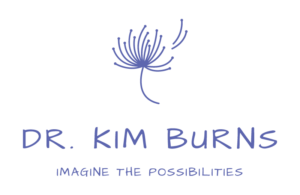In previous posts, I have written about the conditions leading to a successful strategic planning process, how appreciative inquiry can be used to facilitate an inclusive strategic planning process, how SOAR can be an effective analysis tool and, finally, how to involve multiple stakeholders. In this post, I offer insight into the iterative process of drafting, testing, and refining the plan’s priorities, goals, strategies, and metrics.
Why an iterative process?
Building the plan in stages involves more collaboration than if the president’s designee holes up in her office to create the plan. Often, teams working on the plan are from different areas of the college, bring different perspectives, and may not typically have opportunities to work together. The iterative nature also generates more reliable feedback. When faculty and staff see the plan develop in stages, they understand the evolution of the ideas and can provide incremental feedback as the plan progresses and becomes more solid. Because of this, the plan is trusted and of higher quality.
What might this iterative process look like?
Here is a hypothetical scenario (mostly) based on real world examples from my experience.
Oceanside Community College engaged in paired appreciative inquiry interviews during their fall convocation. A data analysis team gathered all the interview data, coded the data, and generated themes. The themes were student success, academic innovation, workforce development, community partnerships, and equity and inclusion. To help the college community understand the themes, they created slides with interpretative descriptions, a list of sample priorities that came out of the interviews, and a list of anonymous verbatim interview quotes. These descriptive components provided context for the themes and demonstrated with evidence that they didn’t just come out of thin air.
These descriptive slides were then presented at SOAR forums to get feedback and to ensure they were heading in the right direction. Two SOAR forums were held for each theme (for a total of 10), so the discussions were focused on a single topic, and the groups were of a manageable size.
Armed with feedback and confidence that the themes represent agreement on the strategic directions of the college, the themes are now considered the plan’s strategic priorities.
The next phase involved identifying a lead facilitator responsible for creating draft goals, strategies, and metrics for each priority. The facilitator, usually a subject matter expert and in a role that will be involved in the plan’s implementation (e.g., a Chief Equity Officer leading the diversity and equity strategic priority), consults with others on campus to create draft goals, strategies and metrics. (If you need a refresher, goals are the desired outcomes, strategies are the tactics or activities that you will employ to achieve the outcomes, and metrics are the evidence that the goals have been achieved.)
The lead facilitators brought their draft goals, strategies, and metrics to the President’s Cabinet for review, discussion, and revision. A draft plan was then distributed to all faculty and staff for review. Faculty, staff, and the Board of Trustees were invited to a Strategic Planning Summit at the start of the spring semester where carefully choreographed activities resulted in targeted feedback on the plan.
The lead facilitators then took all of the data generated at the summit, locked themselves into a conference room for a co-working day, and finalized the plan. The plan was brought to the President’s Cabinet again for final review. With suggestions for minor changes, the plan was approved and sent to the Marketing Department for formatting and distribution. Everyone involved took a big sigh of relief and went back to their desks to tackle the projects they’ve had to put on hold while working on the strategic plan.
But, wait! The Oceanside president knew how hard the team worked on creating the strategic plan so on the day it was published to the college’s website, she had an ice cream truck on campus so everyone could celebrate the completion of the plan and the launch of the implementation phase (and, yes, dairy free ice cream was available!).
Isn’t that a great story? If you are about to launch a strategic plan and need support from an outside consultant, reach out and we can discuss how I can support you. You can reach me at [email protected] and on LinkedIn.
Happy planning.

